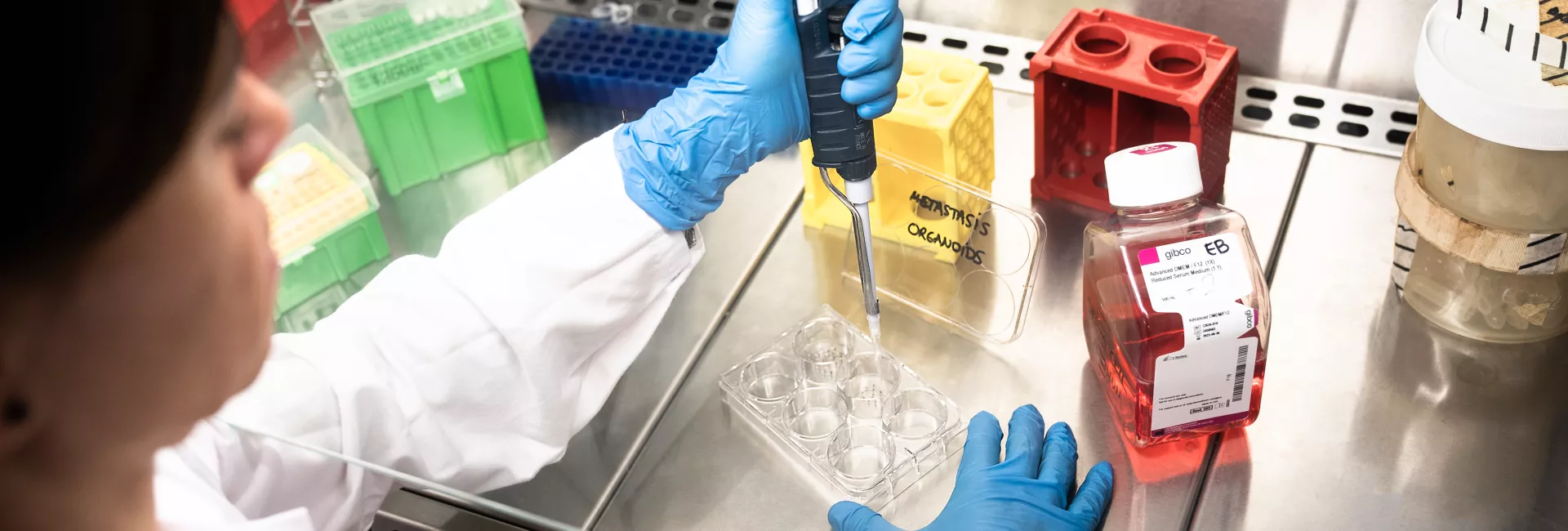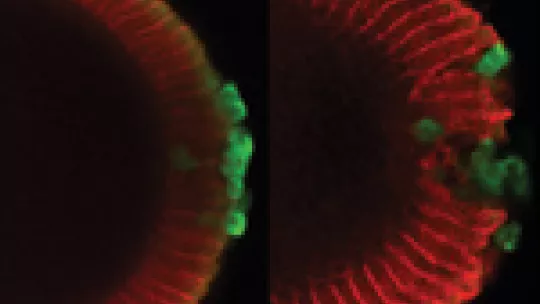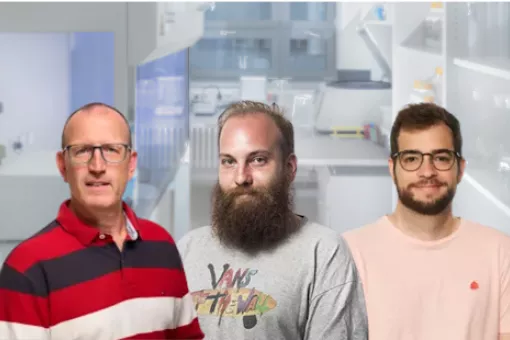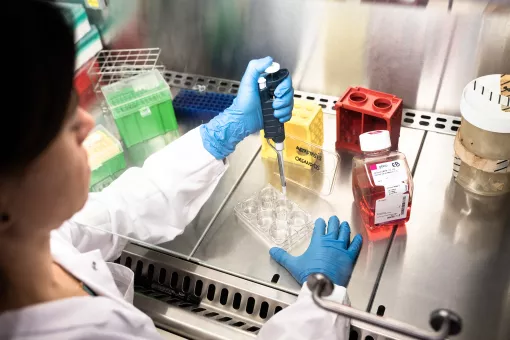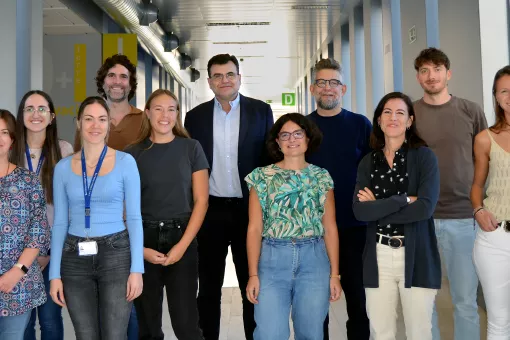Images
An IRB Barcelona research team discovers the mechanism that favours the correct separation of germ cells –future ovules and sperm-, from the rest of the cells during embryonic development.
Almost all organisms evolve from a single cell, a fertilised egg. In the first hours after fertilisation, the fate of its future development is determined. It is dictated by the separation of cells that will become sperm and ovules - germ cells-, from the remaining cells, which will be responsible for forming the body –organs and tissues -, and that comprise the somatic cell line. Scientists at the Institute for Research in Biomedicine (IRB Barcelona), headed by Jordi Casanova, research professor at CSIC, have identified the mechanism that protects somatic cells against the behaviour of germ cells. When this mechanism fails, the embryo dies. Made in the fruit fly Drosophila melanogaster, this finding could be universal. This research is published today in the advanced online edition of EMBO Reports.
In the first hours of embryonic life, the egg cells show intense gene transcription activity to initiate development, with the exception of germ cells which are totally inert and repressed. The DNA of the “sex” cells will pass from parents to offspring, and therefore it is convenient to protect it against possible mutations in a period marked by considerable activity in the milieu. The silencing is governed by a repression mechanism –previously described in earlier work -, that maintains only the germ line genome inactive, but whose signalling also reaches neighbouring somatic cells. The researchers have now discovered that the cells that abut germ cells are protected by a mechanism that blocks the silencing signal emitted by the latter. Casanova explains the context of the study, "it is crucial to unveil all the actors and molecular mechanisms that participate in the repression and activation of the genomes of distinct species because failures in these mechanisms are at the bases of many diseases, such as certain types of cancer."
From the fly to humans
The mechanism of transcription protection in somatic cells has been discovered in the fruit fly D. melanogaster, a model commonly used in embryonic cell development to discover universal genes and molecular mechanisms. "Most of the processes described in Drosophila can be extrapolated to other organisms. Given that the transcriptional repression in germ cells is a general characteristic of all the organisms in which it has been studied, we propose that the antagonistic mechanism that protects is also universal", explains Casanova.
In the 1960s, Drosophila was the model in which researchers described a phenotype named pole hole. Embryos, that did not survive, showed a cavity in one of the poles of the egg in which cells were lacking. "It was thought that this was a problem related to the germ line but the cause was unknown. We now know that in the absence of the protective mechanism somatic cells under the influence of germ cells do not transcribe well and die", says Casanova.
This study has involved collaboration with the groups led by Ruth Lehmann and Rui Gonçalo Martinho at the New York University School of Medicine and the Instituto Gulbenkian de Ciência, in Portugal, respectively.
Reference article
A functional antagonism between the pgc germline repressor and torso in the development of somatic cells.
José Manuel de las Heras, Rui Gonçalo Martinho, Ruth Lehmann and Jordi Casanova.
EMBO Reports (2009) doi:10.1038/embor.2009.128
About IRB Barcelona
The Institute for Research in Biomedicine (IRB Barcelona) pursues a society free of disease. To this end, it conducts multidisciplinary research of excellence to cure cancer and other diseases linked to ageing. It establishes technology transfer agreements with the pharmaceutical industry and major hospitals to bring research results closer to society, and organises a range of science outreach activities to engage the public in an open dialogue. IRB Barcelona is an international centre that hosts 400 researchers and more than 30 nationalities. Recognised as a Severo Ochoa Centre of Excellence since 2011, IRB Barcelona is a CERCA centre and member of the Barcelona Institute of Science and Technology (BIST).
